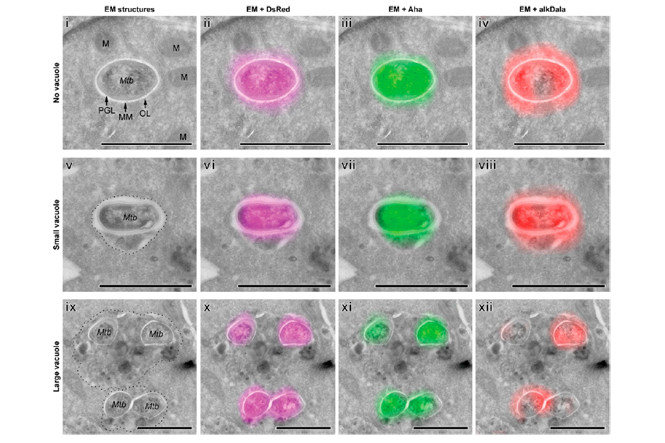Bioorthogonal CLEM of triple label Mtb in RAW 264.7 macrophages. Triple label Mtb were processed for cryo-sectioning, followed bysequential ccHc reaction with AF647-azide and AF488-alkyne, and counterstaining with DAPI. Fluorescently labeled sections were imaged by confocal microscopy, followed by TEM and the images were correlated to obtain the CLEM image.
In collaboration with the group of Sander van Kasteren from Leiden University, Thomas Bakkum published new findings in ACS (American Chemical Society) using advanced correlative light and electron microscopy (CLEM).
Bio-orthogonal CLEM (B-CLEM) was used to study the intracellular pathogen Mycobacterium tuberculosis (Mtb) by generating a triply labeled Mtb through combined metabolic labeling of the cell wall and the proteome of a DsRedexpressing Mtb strain. Study of this pathogen in a B-CLEM setting was used to provide information about the intracellular distribution of the pathogen, as well as its in situ response to various clinical antibiotics, supported by flow cytometric analysis of the bacteria, after recovery from the host cell (ex cellular).
Thomas Bakkum, Matthias T. Heemskerk, Erik Bos, Mirjam Groenewold. Nikolaos Oikonomeas-Koppasis, Kimberley V. Walburg, Suzanne van Veen, Martijn J. C. van der Lienden, Tyrza van Leeuwen, Marielle C. Haks, Tom H. M. Ottenhoff, Abraham J. Koster, and Sander I. van Kasteren
